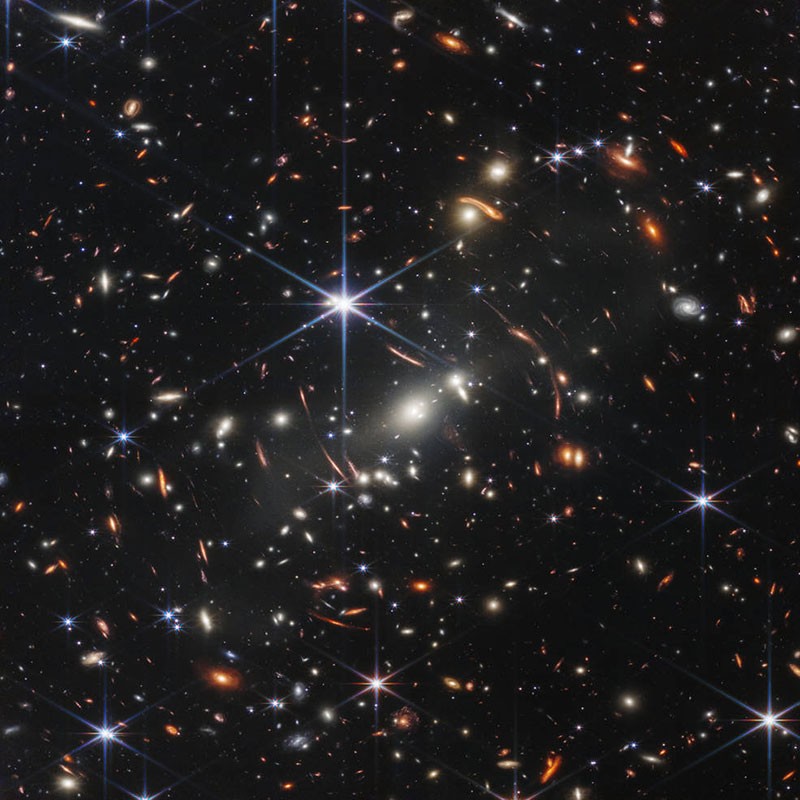
A group of scientists including astrophysicist Tom Broadhurst, Ikerbasque professor at the University of the Basque Country (UPV/EHU) and associate at the Donostia International Physics Center (DIPC), was the first - along with another team of international astrophysicists - in analyzing the earliest image of the universe detected by the James Webb Space Telescope (JWSP).
Broadhurst and his collaborators have been working tirelessly since July 11, the day U.S. President Joe Biden publicly released the now world-renowned image of the SMACS 0723 galaxy cluster in full resolution.
During three days of intense work, the team of scientists analyzed in the image background galaxies that appear to be repeating due to the effect of gravitational lensing - a phenomenon caused by supermassive bodies that converge the background light allowing astronomers to observe remote regions in a natural way -. In their study they have detected a total of 16 repeating galaxies that have allowed them to reconstruct SMACS 0723 and calculate the dark matter zones.
These early findings suggest that the cluster is more elongated than previous studies with other telescopes predicted, most likely due to mergers with large galaxy clusters.
The work has also involved the Institute of Physics of Cantabria (UC-CSIC) together with a research team from several countries, including the United States, United Kingdom, Malta and Israel.
A new era for astronomy
The recently inaugurated James Webb Space Telescope opens a new era in astronomical observation. Its infrared operating range and capacity to detect light two orders of magnitude fainter than the Hubble Space Telescope will make it possible to take images with unprecedented depth and will bring us ever closer to the dawn of the universe.
Expectations are high for James Webb. It is expected to study the moment when the first clusters - filaments, galaxies and stars formed from hydrogen and helium - formed and to advance in the deep field to reach the moment when matter first began to collapse due to gravity. All this will make a unique contribution to understanding how the chemistry of the early universe was formed and how it evolved.
In the coming months, Broadhurst and his coworker at the University of the Basque Country (UPV/EHU) and DIPC Nobel winner George Smoot plan to find out if the Dark Matter detected in this new data is made of waves or particles - a major open question with profoundly different implications for the origin of galaxies, stars and life -.
In addition, several astrophysicists and cosmologists in Basque institutions will work directly or indirectly with data produced by the James Webb Space Telescope from now on. The list includes Mariam Bouhmadi López (Ikerbasque at UPV/EHU), Silvia Bonoli (Ikerbasque at DIPC) and Nate Bastian (Ikerbasque at DIPC).
.png)
